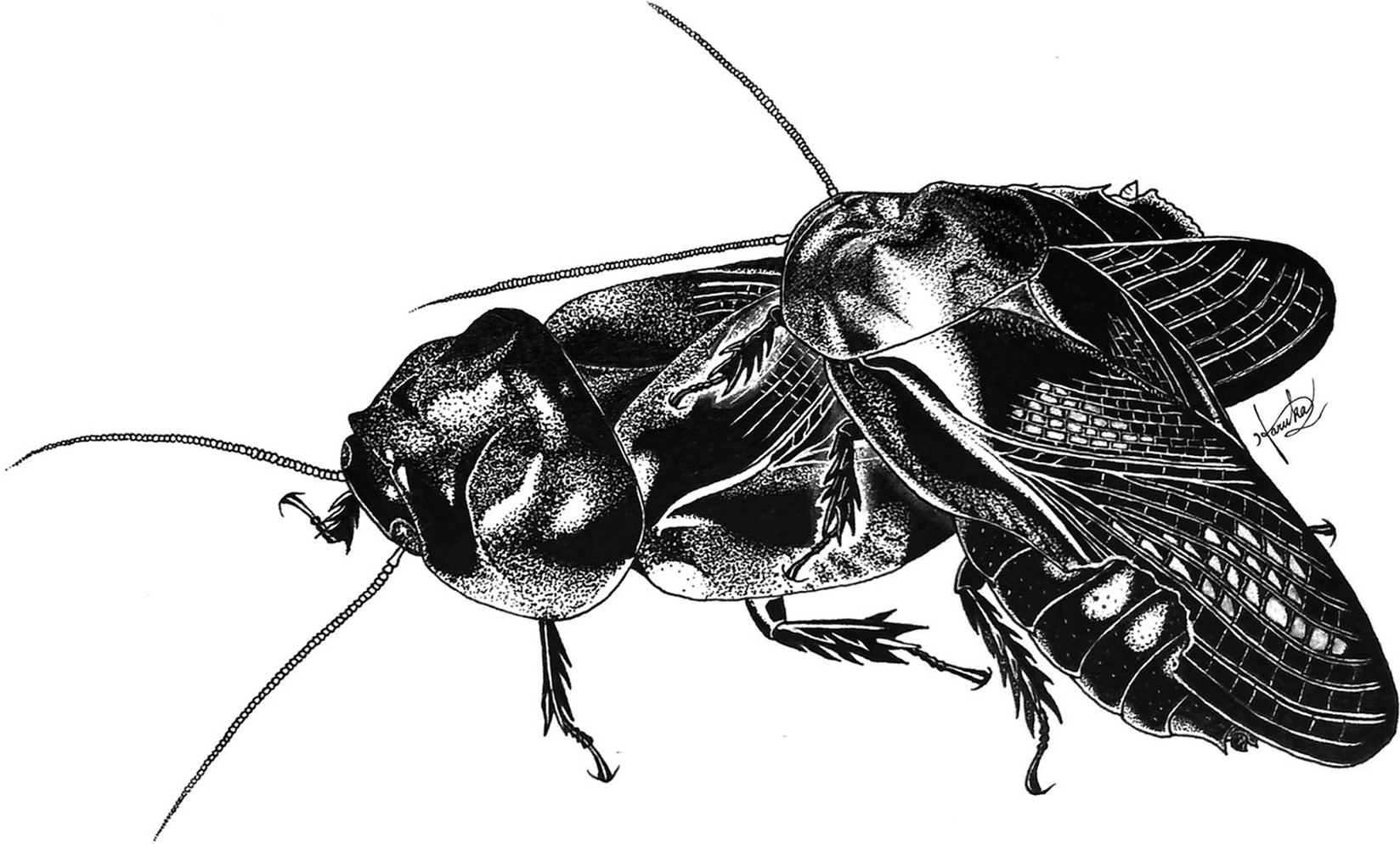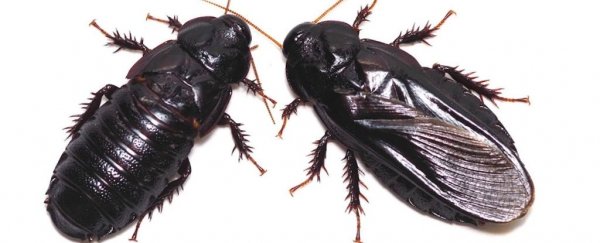Male and female wood roaches are one of the few insect couples suspected of truly mating for life. The secret to one species' long-lasting love? A bit of mutual cannibalism.
In a revelry of post-coital bliss, mating cockroaches (Salganea taiwanensis) have been filmed chowing down on each other's wings for days on end, taking turns to eat and be eaten.
What's more, out in the field, over 99 percent of roach parents appear to possess chewed stumps for wings, which suggests the practice is common.
Collecting wild specimens in the woods of Japan, researchers have now filmed 24 pairs of insects over the course of three days to figure out what these creatures are doing and why.
Most of the time after mating, the roach being eaten in the footage remained entirely motionless. Just over a third of the time, the recipient "violently shook its body left and right", which would sometimes get its mate to stop. In half the couples, the feasting continued until all four wings were completely gone.
 Drawing of a mating pair during mutual wing‐eating behaviour. (Haruka Osaki)
Drawing of a mating pair during mutual wing‐eating behaviour. (Haruka Osaki)
Sexual cannibalism isn't all that odd for insects per say, but it usually involves the female consuming the male in a way that is fatal. The reverse is rare, and reciprocal feeding entirely unique.
If this sort of mutual cannibalism really does exist in nature, it suggests true monogamy - where the behaviour of one sex benefits the other and vice versa in an equal way - is possible, albeit exceedingly rare. No such relationship has ever been observed in the wild.
The results from the current study only occurred in a lab - not out in the wild, but the authors argue if there weren't some benefit to both roaches, you'd expect them to kick up a bit more of a fuss when their partner is snacking on them.
In fact, it probably has more to do with grooming than eating. Because roach wings are not made of actual flesh, chewing on these appendages probably doesn't provide much nutritional value to their mate.
Instead, the authors suggest this particular kind of wood roach partakes in mutual cannibalism to increase their mate's survival, so they can raise young for years on end without having to worry about betrayal.
After flying from their birth place and finding a mate, wood-eating roaches feed and protect their young in the comfort of a rotting log, raising them together and sharing the parenting load.
In such cramped quarters, their wings are probably not all that useful. These appendages could also leave the insects vulnerable to mites, infection, and the temptations of other roaches.
In adulthood, a pair of adult flightless roaches hardly ever enters another couple's log. Simply leaving the home deprives the adult roach of food, and without long wings, they are more susceptible to predators.
Removing each others' wings could therefore be the most loving act for roaches of this kind, ensuring a partner's survival, their fidelity, and their ability to help raise young for the rest of their adult lives.
It's not uncommon for other insects to lose their wings in adulthood, but they usually don't have help from a dedicated other.
Wood roaches appear capable of cannibalism without the conflict.
The study was published in Ethology.
